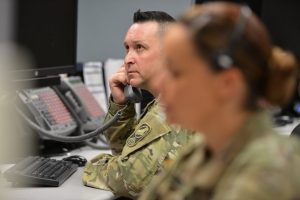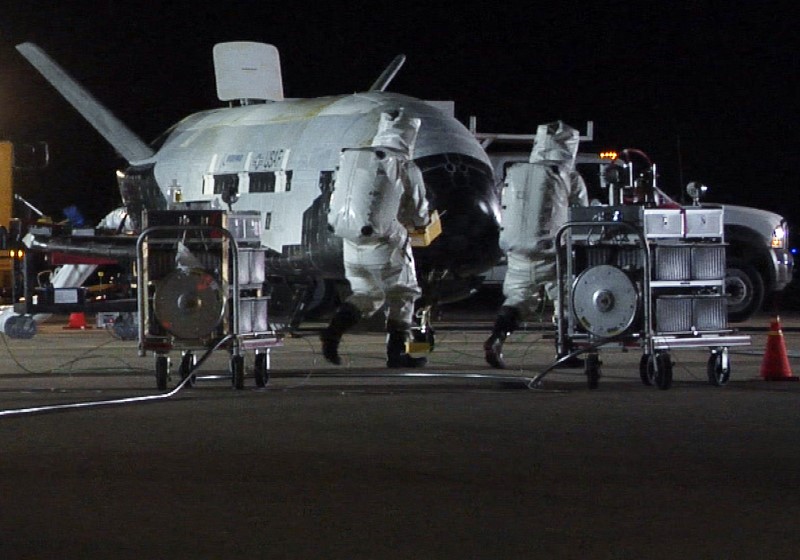
By Justin Mitchell
FORT GREELY, Alaska (Reuters) – Two hours south of Fairbanks, Alaska, near the starting point of the Alaska highway, sit row upon row of missile silos embedded in the frozen ground in the shadow of snow-capped mountains.
Despite their location, far from Washington, D.C., Pyongyang, or Moscow, the 40 missiles here could one day decide the fate of millions of Americans.
The missiles and a few dozen National Guard soldiers will form the first line of defense should North Korea, or any other country, fire an intercontinental ballistic missile at the United States.
In recent months, North Korea has said it has developed a missile that can reach the United States mainland.
In a control room at Ft. Greely, just outside the small town of Delta Junction, five soldiers performed a simulation on Thursday showing reporters how they would respond to an attack.

Blast door in the silo interface vault of a ground based interceptor missile at the Ft. Greely missile defence complex in Fort Greely, Alaska, U.S., April 26, 2018. REUTERS/Mark Meyer
“The first threat in the system shows an impact location of Los Angeles,” said Captain Jospeh Radke, the team’s battle analyst, referring to the second largest U.S. city.
“Threat in the system is showing Los Angeles, we’re going to engage at this time,” said Major Terri Homestead, the crew’s director.
Homestead then gave orders to the team’s weapons operator, Staff Sergeant Justin Taylor, to fire one missile from Ft. Greely and another from Vandenberg Air Force Base in California.
The five-person team is one of 10 units that operate the Ground-Based Midcourse Defense system. They spend 60 percent to 70 percent of their working days running drills, trying to account for any possible scenario.
GROWING TENSION
Soldiers such as Homestead and Radke have seen the facility take on increasing significance in global affairs in recent years, as tension with North Korea has escalated.
Most recently, U.S. President Donald Trump and North Korean leader Kim Jong-Un spent much of late 2017 and early 2018 trading threats of annihilation.
The soldiers said the high stakes are part of what makes them love the job, despite the remote location and the strain of weighing life-or-death options.
“That responsibility is what drives us,” Radke told reporters. “It’s really what allows us to put in the time that we do up here. Knowing not just that you’re protecting the 300 million people in the United States, but also your family members, your friends across the United States.”

Captain Jospeh Radke, Battle Analyst of the 49th Fire Direction Center, performs missile defense exercises at the Ft. Greely missile defense complex in Fort Greely, Alaska, U.S., April 26, 2018. REUTERS/Mark Meyer
The system became operational in 2004 under the direction of President George W. Bush. Now there are plans to add 20 more missiles to the 40 waiting silently just underground in Ft. Greely, with additional interceptors at Vandenberg Air Force Base in California.
The most recent test, in May, was successful. Colonel Kevin Kick, the commander of the 100th Missile Defense Brigade, which oversees the missile defense system, said it was constantly being improved.
“These ground-based interceptors in the system fielded right now at Ft. Greely and at Vandenberg Air Force Base are the best of what we’ve got,” Kick said. “We’re ready, if called on, to respond to threats against our nation.”
Reporting by Justin Mitchell; Editing by Clarence Fernandez)

